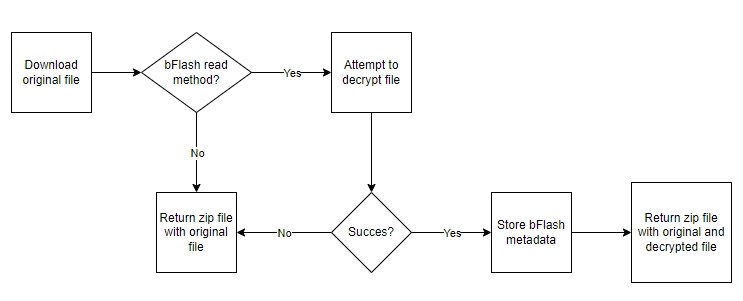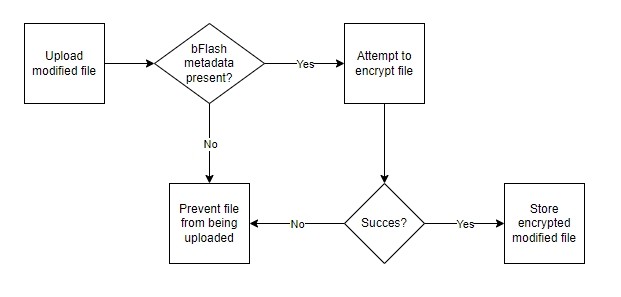Knowledge base
bFlash integration
File-service.com offers an easy-to-use integration with the bFlash API. To enable this integration, go to Features -> bFlash integration and enable the feature.
On the setting page in your platform, you will notice a "Read methods available/Read methods selected" field. This field is used to determine for which read methods the API is enabled and thus will attempt to decrypt and encrypt files. It is required to specify these read methods manually to ensure proper working since read methods can be named anything. The system could in some cases not be able to detect which read methods should apply correctly.
How it works
The diagrams below show the processes involving bFlash. To encrypt a file, metadata about the slave file can be used. This metadata is automatically stored when decrypting a file.
Downloading original file as admin
The first process is when you attempt to download an original file from your admin environment.
Uploading modified file as admin
When you upload a modified file in your admin environment, and bFlash metadata has been stored because the original file has been downloaded and decrypted, the system requires it to be a decrypted slave file. If the file can not be encrypted, the system will produce an error. To circumvent this, check the "Reset bFlash metadata" checkbox.
Note: Currently, the encryption does not do any server-side validation. So the "Attempt to encrypt file" step in the diagram will always succeed. Except for when the API is down.
Drop zones
In addition to the automated processes, you can also use the drop zones on the file service and support tickets pages to manually decrypt and encrypt files. When decrypting a file using the drop zone, the bFlash metadata is automatically stored with the appropriate item on the page. This could be either a file service or a support ticket.


